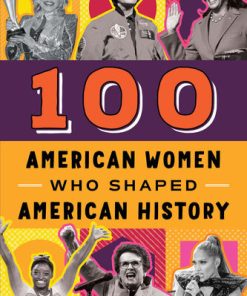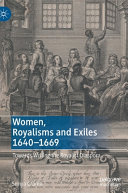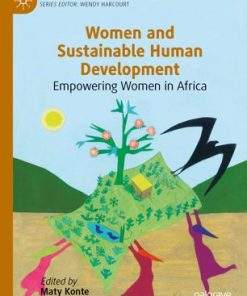Liminality, Hybridity, and American Women’s Literature: Thresholds in Women’s Writing Kristin J. Jacobson
$50.00 Original price was: $50.00.$25.00Current price is: $25.00.
Liminality, Hybridity, and American Women’s Literature: Thresholds in Women’s Writing – Ebook Instant Download/Delivery ISBN(s): 9783319738512,3319738518

Product details:
- ISBN 10: 3319738518
- ISBN 13: 9783319738512
- Author: Palgrave Macmillan
This book highlights the multiplicity of American women’s writing related to liminality and hybridity from its beginnings to the contemporary moment. Often informed by notions of crossing, intersectionality, transition, and transformation, these concepts as they appear in American women’s writing contest as well as perpetuate exclusionary practices involving class, ethnicity, gender, race, religion, and sex, among other variables. The collection’s introduction, three unit introductions, fourteen individual essays, and afterward facilitate a process of encounters, engagements, and conversations within, between, among, and across the rich polyphony that constitutes the creative acts of American women writers. The contributors offer fresh perspectives on canonical writers as well as introduce readers to new authors. As a whole, the collection demonstrates American women’s writing is “threshold writing,” or writing that occupies a liminal, hybrid space that both delimits borders and offers enticing openings.
Table of contents:
- 1. Introduction: Threshold Thinking
- Part I. Early American Thresholds
- 2. Early American Women Writers: The Potentiality of the Continual Self-Creating Act
- 3. “Sweet Cement”: Occasioning Bathsheba Bowers’s An Alarm Sounded to Prepare the Inhabitants of the World to Meet the Lord in the Way of His Judgments
- 4. Beyond “The Bars”: Lucy Terry Prince and the Margins of the Colonial Landscape
- 5. The Liminal Time of Friendship: Narrative Delay in Hannah Webster Foster’s The Coquette
- 6. “We Cannot Be Indifferent”: Native Americans and the Students of the Bethlehem Boarding School
- Part II. Nineteenth-Century Thresholds
- 7. Resistance and Alternative Histories in Nineteenth-Century Women’s Writing
- 8. Changing Is Surviving: Transformation as Resistance in the Ojibwe Stories of Jane Johnston Schoolcraft
- 9. Inhabiting the Liminal: The Architecture of Single Life in Catharine Maria Sedgwick’s Fiction
- 10. Contesting Sentimentalism: Human–Animal Bonds and Boundaries in Grace Greenwood’s History of My Pets
- 11. “The Third Sex”: Nineteenth-Century Women Physicians in Queer, Liminal Literary Spaces
- 12. “Costume de ghost”: Liminality in Grace King’s Balcony Stories
- Part III. Twentieth- and Twenty-First-Century Thresholds
- 13. A Fragile Optimism: Writing Liminality and Hybridity in the Twentieth and Twenty-First Centuries
- 14. La mujer en llamas: Legal Storytelling in Lucha Corpi’s Black Widow’s Wardrobe
- 15. States of Exception and Arab American Women’s Poetry After 9/11: Liminality and Community in Suheir Hammad’s “first writing since” and D. H. Melhem’s “September 11, 2001, World Trade Center, Aftermath”
- 16. Still Moving: Gabrielle Bell’s Graphic Auto-Fiction
- 17. “A Mash-Up World”: Hybridity and Storytelling in Ruth Ozeki’s A Tale for the Time Being
- 18. Extreme Sex: Contemporary American Women Writers at the Margins
- 19. Afterword: Beyond Thresholds—Suggestions for Further Research
People also search:
You may also like…
Uncategorized
Biography & Autobiography
100 American Women Who Shaped American History 2nd Edition Deborah G. Felder
History - European History
Women, Royalisms and Exiles 1640–1669: Towards Writing the Royalist Diaspora
Politics & Philosophy - Women's Studies
Women and Sustainable Human Development: Empowering Women in Africa 1st Edition Maty Konte
Politics & Philosophy - Women's Studies
Women, Literature and Finance in Victorian Britain: Cultures of Investment 1st Edition
History - European History












